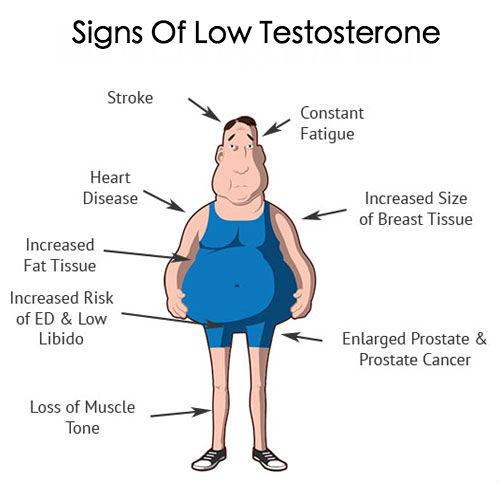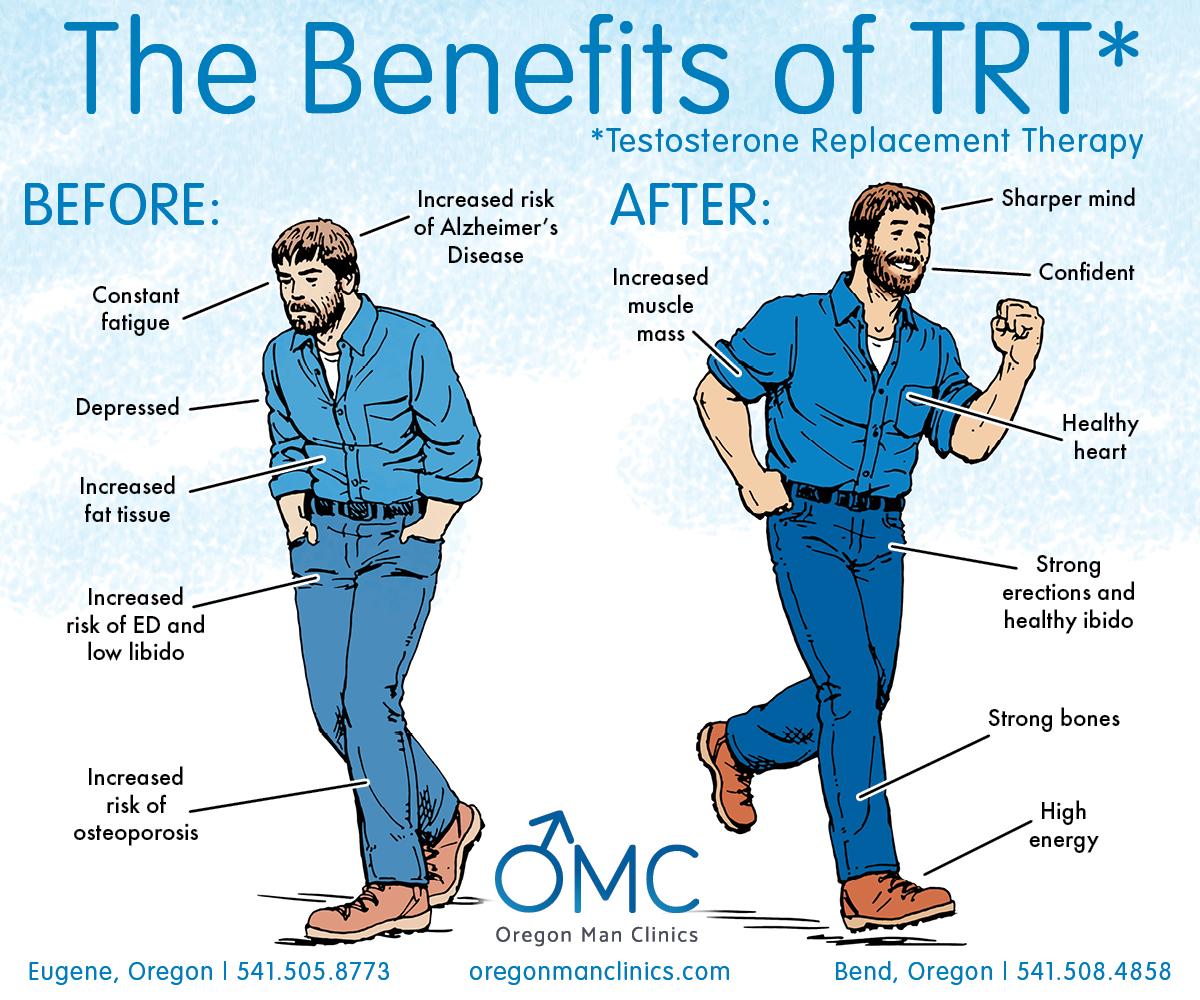In a world where wellness trends ebb and flow like the tides, low testosterone therapy stands out as a beacon of hope for many. As men increasingly seek answers to the physical and emotional challenges brought on by declining testosterone levels, stories of transformation begin to surface. These narratives are not merely testimonies; they represent the journeys of individuals striving for vitality, regaining their sense of self, and reclaiming the vigor of their youth. In this article, we delve into the compelling success stories of those who have embraced low testosterone therapy, exploring the profound impact it has had on their lives. From renewed energy to improved mental clarity, we uncover the realities behind the numbers and the science, illustrating how hormone replacement can pave the way for a healthier, more fulfilled existence. Join us as we navigate these personal accounts, shedding light on the struggles and triumphs that have defined their quests for a balanced life.
Understanding Low Testosterone: A Journey to Wellness
Many individuals have experienced profound transformations upon starting therapy, often finding renewed energy and a sense of purpose in their daily lives. These stories are not just anecdotes; they highlight the tangible benefits of addressing low testosterone levels. For instance, consider John, a 45-year-old who struggled with fatigue and mood swings for years. After beginning treatment, he reported improvements in both his physical stamina and emotional well-being. His typical day now includes activities like hiking and playing with his children, which he had long given up. Similar success has been found among others:
- Mark: Enhanced muscle mass and reduced body fat.
- Linda: Improved libido and relationship dynamics.
- Steven: Boosted cognitive function and focus.
- Rachel: Reclaimed her zest for life and social interactions.
The journey to wellness through therapy is often accompanied by a comprehensive approach that includes lifestyle changes, such as diet and exercise. Below is a table illustrating some common strategies that coincide with testosterone therapy:
| Strategy | Description |
|---|---|
| Balanced Diet | Incorporates healthy fats, proteins, and micronutrients. |
| Regular Exercise | Includes strength training and cardiovascular workouts. |
| Quality Sleep | Ensures restorative sleep cycles for hormonal balance. |
| Stress Management | Practices like mindfulness and yoga to reduce cortisol levels. |

Real-Life Transformations: Inspiring Testosterone Therapy Stories
Countless individuals have experienced remarkable life changes through testosterone therapy, highlighting its potential to restore vitality and vigor. Take John, for instance, a 48-year-old father who struggled with fatigue and decreased motivation. After starting his therapy regimen, he not only regained his energy levels but also discovered a renewed enthusiasm for long-forgotten hobbies. His journey included:
- Increased energy: John found himself engaged in activities he previously avoided.
- Improved mood: He reported feeling more balanced and emotionally stable.
- Enhanced muscle mass: Regular workouts yielded better results than before.
Another inspiring example is Sarah, a 35-year-old woman who faced challenges with weight gain and low libido. After her tailored testosterone therapy plan, she saw significant changes not only in her physical appearance but also in her overall well-being. Her transformation is evident in her success metrics:
| Metric | Before Therapy | After Therapy |
|---|---|---|
| Weight (lbs) | 200 | 175 |
| Energy Levels (1-10) | 4 | 8 |
| Libido (1-10) | 3 | 7 |

The Science Behind Low Testosterone and Its Treatment
Understanding the intricacies of low testosterone is essential to appreciating its treatment. Testosterone plays a critical role in various bodily functions, including muscle mass, bone density, and even mood regulation. When testosterone levels fall below normal, men may experience an array of symptoms such as fatigue, decreased libido, and mood swings. Research indicates that low testosterone can be attributed to several factors, including age, lifestyle choices, and underlying health conditions. Patients often report feeling more energetic and rejuvenated after management interventions that include lifestyle changes and hormone replacement therapy.
Effective treatment options for low testosterone are grounded in scientific research and clinical applications. Among the most common therapies are:
- Testosterone Injections: Administered every few weeks, these help restore optimal testosterone levels.
- Patches and Gels: Applied to the skin, these provide a controlled release of testosterone directly into the bloodstream.
- Pellets: Implanted under the skin, they release testosterone slowly over time.
The choice of treatment often depends on individual preferences, lifestyle, and medical history, highlighting the importance of personalized care. Ongoing studies continue to shed light on the effectiveness and safety of these therapies, creating a promising avenue for men looking to elevate their quality of life.

Navigating the Treatment Options: Finding What Works for You
When exploring the myriad of treatment options available for low testosterone, it’s important to tailor the approach to fit individual needs. Men seeking therapy often have unique circumstances that influence their decisions. Lifestyle changes, such as improved diet and regular exercise, can complement medical interventions, enhancing their effectiveness. Many individuals have found success through options like:
- Testosterone Replacement Therapy (TRT) - available in injections, patches, gels, or pellets.
- Clomiphene Citrate – an alternative that stimulates the body to produce more testosterone naturally.
- Human Chorionic Gonadotropin (hCG) – commonly used alongside TRT to support testicular function.
As men navigate their treatment journeys, keeping track of responses to each therapy is crucial for finding the most effective solution. A collaborative approach with healthcare providers can significantly improve outcomes. Furthermore, evaluating the pros and cons of each method allows individuals to make informed decisions. Below is a simple comparison table that summarizes key factors to consider when weighing treatment options:
| Treatment Option | Administration Method | Frequency | Potential Side Effects |
|---|---|---|---|
| TRT | Injections, Gels, Patches | Weekly to Monthly | Acne, Mood Swings |
| Clomiphene Citrate | Oral Tablets | Daily | Headaches, Nausea |
| hCG | Injections | 3x Per Week | Swelling, Fatigue |
Lifestyle Changes that Complement Testosterone Therapy
Incorporating lifestyle changes can significantly enhance the effectiveness of testosterone therapy. A few strategic adjustments to daily habits can create a synergistic effect that not only supports hormone balance but also improves overall well-being. Consider adopting the following habits:
- Regular Exercise: Engaging in both strength training and aerobic activities can boost testosterone levels naturally while enhancing the results of therapy.
- Healthy Nutrition: A balanced diet rich in healthy fats, lean proteins, and antioxidants supports hormone production. Foods like avocados, nuts, and leafy greens can be particularly beneficial.
- Sufficient Sleep: Quality sleep is crucial for hormone regulation; aim for 7-9 hours per night to optimize testosterone levels.
- Stress Management: Incorporate stress-relief techniques such as meditation or yoga, as chronic stress can interfere with hormonal balance.
Additionally, establishing regular health check-ups can help monitor testosterone levels and make necessary adjustments to therapy as needed. Consider the following elements in your health routine:
| Health Element | Importance |
|---|---|
| Weight Management | Maintaining a healthy weight can influence hormone production positively. |
| Hydration | Proper hydration improves metabolic function and overall health. |
| Social Connections | Strong relationships can reduce stress and provide a support system. |
Common Misconceptions About Low Testosterone and Its Treatment
Many people hold a variety of assumptions about low testosterone and its treatment, leading to confusion and stigma. One common myth is that low testosterone is solely a problem for older men, yet it can affect individuals of all ages due to various factors, including genetics, lifestyle, and medical conditions. Another misconception is that testosterone therapy is purely about enhancing performance or increasing muscle mass; in reality, effective treatment targets hormone balance, which can significantly improve mood, energy levels, and overall quality of life.
People may also believe that testosterone replacement therapy is unsafe or will lead to aggressive behavior. However, research shows that when supervised by a healthcare professional, testosterone therapy can provide numerous health benefits with minimal risks. Understanding these points are crucial in dispelling myths surrounding treatment. Here are some key facts:
- Low testosterone can affect mental health: Symptoms often include depression and anxiety.
- Not just about age: Low testosterone can be caused by various factors, irrespective of age.
- Professional supervision is vital: Safe treatment requires the guidance of a healthcare provider.
Empowering Your Health: Tips for Maximizing Therapy Success
The journey towards enhanced wellness through low testosterone therapy often involves a multi-faceted approach. To ensure you maximize the benefits of therapy, consider implementing the following strategies:
- Stay Informed: Knowledge about your condition and treatment options empowers you to engage actively in your therapy.
- Regular Monitoring: Consistent follow-ups with your healthcare provider help track progress and make necessary adjustments to your regimen.
- Healthy Lifestyle Choices: Diet, exercise, and sleep play crucial roles in enhancing therapy results. Incorporate nutrient-rich foods and regular physical activity into your daily routine.
- Open Communication: Discuss any side effects or changes in your symptoms with your healthcare team to ensure personalized care.
Here’s a simple overview table illustrating key factors that can influence therapy outcomes:
| Factor | Importance |
|---|---|
| Diet | Supports hormonal balance. |
| Exercise | Boosts mood and testosterone levels. |
| Consistency | Ensures stability in hormone levels. |
| Medical Guidance | Provides tailored treatment plans. |
Q&A
Q&A on Low Testosterone Therapy Success Stories
Q1: What is low testosterone therapy?
A1: Low testosterone therapy involves medical treatments aimed at increasing testosterone levels in men diagnosed with low testosterone (hypogonadism). This can include testosterone replacement therapy (TRT) through injections, patches, gels, or pellets. The goal is to alleviate symptoms such as fatigue, reduced libido, and mood changes, helping patients regain their vitality.
Q2: Who can benefit from low testosterone therapy?
A2: Men of various ages can benefit from low testosterone therapy, particularly those experiencing symptoms that adversely affect their quality of life. Typically, it’s recommended for men diagnosed with clinically low testosterone levels through specific blood tests. It’s essential, however, to discuss individual health circumstances with a healthcare provider to ensure it’s appropriate.
Q3: What are some common success stories associated with low testosterone therapy?
A3: Many individuals have shared transformative experiences following low testosterone therapy. Success stories often highlight improvements in energy levels, enhanced mood, increased libido, and better physical performance. Some men emphasize the boost in confidence and the ability to engage more actively with family and friends, reclaiming a sense of normalcy in their daily lives.
Q4: Can you provide an example of a success story?
A4: Certainly! Take the story of Mike, a 52-year-old who struggled with weight gain, fatigue, and emotional swings. After being diagnosed with low testosterone, Mike began testosterone replacement therapy. Within months, he experienced a remarkable transformation. He lost 20 pounds, rekindled his relationship with his partner, and found the energy to pursue hobbies he once loved. Mike enthusiastically shares that TRT not only improved his physical health but also revitalized his emotional well-being.
Q5: Are there any risks associated with low testosterone therapy?
A5: Yes, while many men experience positive outcomes, testosterone therapy is not without risks. Potential side effects can include sleep apnea, acne, an increased risk of blood clots, and changes in cholesterol levels. It’s crucial for patients to have ongoing discussions with their healthcare providers to monitor their health throughout the treatment.
Q6: How do patients typically measure the success of their therapy?
A6: Success can be measured both subjectively and objectively. Patients often report improvements in symptoms like energy, mood, sexuality, and overall life satisfaction. Objective measures can include retesting testosterone levels, assessing body composition changes, and monitoring overall health indicators such as cholesterol and blood pressure.
Q7: What advice would you offer someone considering low testosterone therapy?
A7: Before starting therapy, it’s essential to consult with a knowledgeable healthcare provider who can provide a thorough evaluation. Consider asking about potential benefits, side effects, and monitoring protocols. It’s also wise to maintain a healthy lifestyle with regular exercise and a balanced diet, which can enhance the effectiveness of any therapy.
Q8: Where can readers find more success stories about low testosterone therapy?
A8: Numerous online forums, health blogs, and medical websites offer personal testimonials and experiences related to low testosterone therapy. Engaging in communities such as those on social media or health-focused platforms can provide insights and encouragement from others who have walked the same path.
Q9: Is it common for success stories to inspire others?
A9: Absolutely! Success stories often serve as a beacon of hope for men struggling with similar issues. Hearing about the positive experiences of others can motivate individuals to seek help and explore options, demonstrating that change is possible and that they are not alone in their journey.
—
This Q&A format not only addresses common inquiries but also highlights the transformational experiences linked to low testosterone therapy, providing a comprehensive overview for readers.
Wrapping Up
In the journey of health and wellness, low testosterone therapy can often feel like a crossroads, prompting questions, concerns, and a desire for answers. As we conclude this exploration of success stories, it becomes clear that while each individual’s experience is unique, the common thread woven through these narratives is one of transformation and renewed vitality. Men who once grappled with fatigue, mood swings, and diminished quality of life now share tales of revitalization and rediscovery, reclaiming not just their energy but often their very sense of self.
Ultimately, low testosterone therapy serves as a reminder of the resilience of the human spirit. These stories illustrate that seeking help is not a sign of weakness but a courageous step towards empowerment. For those considering this path, it’s crucial to engage with qualified healthcare professionals to tailor an approach that resonates with personal needs and aspirations. The road to balance is not always linear, but as evidenced by these journeys, it is certainly filled with hope.
As we step away from these narratives, may they inspire reflection and dialogue, igniting a conversation that transcends stigma and promotes understanding. The success stories of low testosterone therapy remind us that change is possible, and with it comes the promise of a brighter, more vigorous tomorrow.










